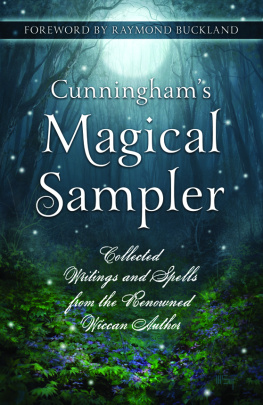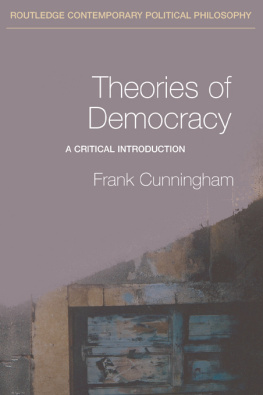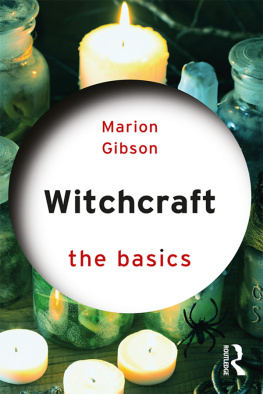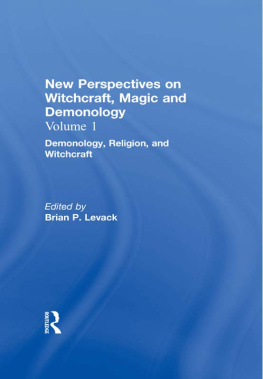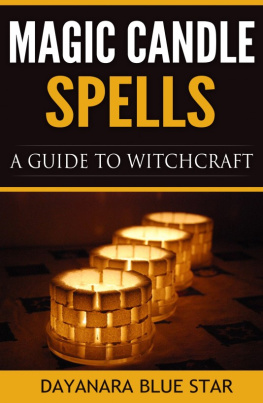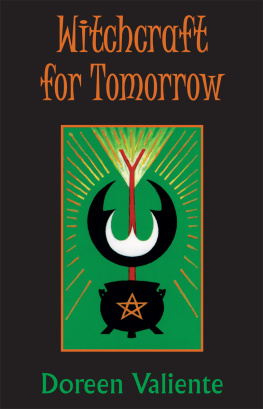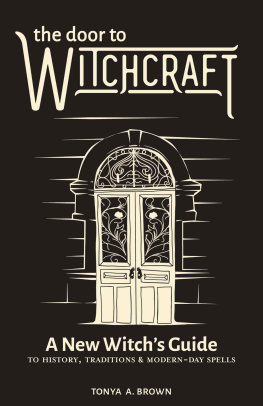Cunningham - Llewellyns Truth About Witchcraft
Here you can read online Cunningham - Llewellyns Truth About Witchcraft full text of the book (entire story) in english for free. Download pdf and epub, get meaning, cover and reviews about this ebook. City: Woodbury;MN, year: 2013, publisher: Llewellyn Worldwide, LTD., genre: Religion. Description of the work, (preface) as well as reviews are available. Best literature library LitArk.com created for fans of good reading and offers a wide selection of genres:
Romance novel
Science fiction
Adventure
Detective
Science
History
Home and family
Prose
Art
Politics
Computer
Non-fiction
Religion
Business
Children
Humor
Choose a favorite category and find really read worthwhile books. Enjoy immersion in the world of imagination, feel the emotions of the characters or learn something new for yourself, make an fascinating discovery.
- Book:Llewellyns Truth About Witchcraft
- Author:
- Publisher:Llewellyn Worldwide, LTD.
- Genre:
- Year:2013
- City:Woodbury;MN
- Rating:5 / 5
- Favourites:Add to favourites
- Your mark:
- 100
- 1
- 2
- 3
- 4
- 5
Llewellyns Truth About Witchcraft: summary, description and annotation
We offer to read an annotation, description, summary or preface (depends on what the author of the book "Llewellyns Truth About Witchcraft" wrote himself). If you haven't found the necessary information about the book — write in the comments, we will try to find it.
Llewellyns Truth About Witchcraft — read online for free the complete book (whole text) full work
Below is the text of the book, divided by pages. System saving the place of the last page read, allows you to conveniently read the book "Llewellyns Truth About Witchcraft" online for free, without having to search again every time where you left off. Put a bookmark, and you can go to the page where you finished reading at any time.
Font size:
Interval:
Bookmark:
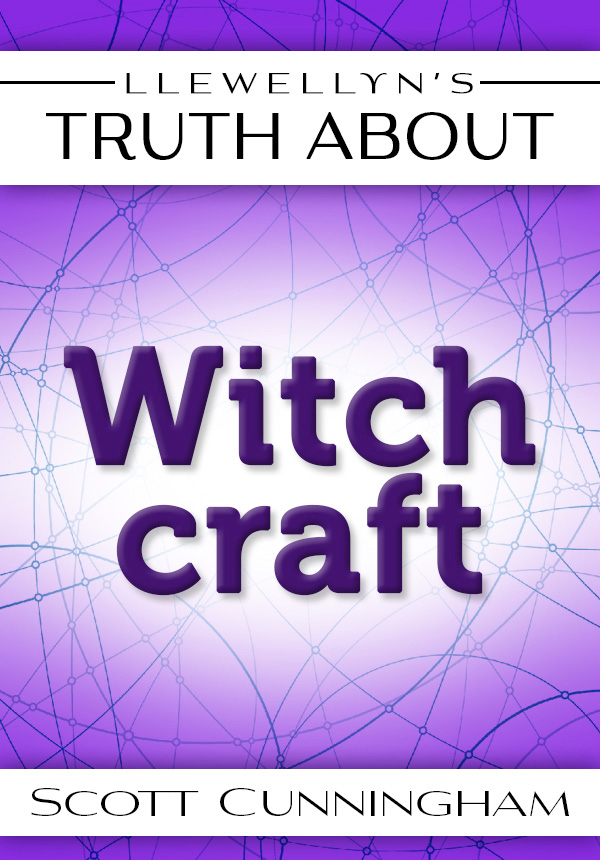
About the Author
Scott Cunningham practiced magic for over 20 years. He was the author of over 30 fiction and non-fiction books. Llewellyn Publications published 16 titles. Cunninghams books reflect a broad range of interests within the New Age shpere, where he was highly regarded. He passed from this life on March 28, 1993 after a long illness.
Copyright Information
The Truth About Witchcraft. 1994 Scott Cunningham. All rights reserved. Printed in the United States of America. No part of this book may be used or reproduced in any manner whatsoever including Internet usage, without written permission from Llewellyn Publications, except in the form of brief quotations embodied in critical articles and reviews.
As the purchaser of this e-book, you are granted the non-exclusive, non-transferable right to access and read the text of this e-book on screen. The text may not be otherwise reproduced, transmitted, downloaded, or recorded on any other storage device in any form or by any means.
Any unauthorized usage of the text without express written permission of the publisher is a violation of the authors copyright and is illegal and punishable by law.
For permission, or for serialization, condensation, or for adaptations, write the Publisher at the address below.
First Edition
Third Printing, 1992 Second Edition
First Printing, 1994
First e-book edition 2013
E-book ISBN: 9780738738543
International Standard Book Number: 0-87542-357-4
Llewellyn Publications is an imprint of Llewellyn Worldwide Ltd.
Llewellyn Publications does not participate in, endorse, or have any authority or responsibility concerning private business arrangements between our authors and the public.
Any Internet references contained in this work are current at publication time, but the publisher cannot guarantee that a specific reference will continue or be maintained. Please refer to the publishers website for links to current author websites.
Llewellyn Publications
Llewellyn Worldwide Ltd.
2143 Wooddale Drive
Woodbury, MN 55125
www.llewellyn.com
Manufactured in the United States of America
INTRODUCTION
Candles gleam. Incense smoke swirls. Robed figures, chanting in a long-dead language, whirl around a rustic wooden table. On it sit sacred imagesa robust female wearing a crescent moon on her forehead, a horned male holding a spear in his upraised hand.
All movement stops. A woman standing near the altar says:
In this sacred space and time
we call now the old ones:
The goddess of the moon, of seas and rivers;
The god of the rayed sun, of valleys and forests:
Draw near us during this circle.
This is Witchcraft.
Two thousand miles away, a 15-year-old girl affixes a green candle onto a Polaroid photo of a friend. In the darkened room she lights the candle. Her eyes closed, the girl visualizes her boyfriends broken arm surrounded by a purple light intended to quickly heal it.
This, too, is Witchcraft.
These two examples sum up Witchcraft. It is a religion, known as Wicca. It is also the practice of folk magic.
The average person probably thinks that Witchcraft is Satanism, orgies and drug-ingesting, devil worship, unsavory rituals, cruelty and human sacrifice.
There certainly are people who do such thingsmurderers, psychotics, and those frustrated by the religion into which they were born. But these people arent Witches and they dont practice Witchcraft. The Truth About Witchcraft examines both folk magic and the modern Wiccan religion, subjects long shrouded in secrecy. The lies have been told. Its time for the truth.
BY CHARM AND SPELL
Folk magic was born in an age of wonder. Tens of thousands of years ago, nature was a mysterious force. Points of light swung far overhead in the sky. Invisible forces ruffled matted hair and kicked up dust storms. Water fell from above. Powerful forces, inconceivable to humans, sent flashes of light from the skies, blasting trees into raging infernos. Women miraculously bore young. All that moved eventually died. Blood was sacred. Food was sacred. Water, the Earth, plants, animals, the wind, and all that existed was infused with power.
Magicas well as religion and sciencesprang from the actions of the first humans who tried to understand, contact, and gain some control over such forces. Ritual developed as a means of uniting with the source of this universal energy. Gestures, rhythm, symbols, music, dance, and the spoken word were used in ritual to shift the awareness to these higher powers.
Folk magic slowly developed from these beginnings. Every group, every tribe and civilization, had its own forms of ritual. Folk magic differed from structured religion and state magicthis was the realm of personal magic, performed for personal reasons. A woman dressed a wound with a plantain leaf that she had gathered with her left hand to increase its healing properties. The fisherman rubbed his bone hooks with flowers to attract fish. Love-sick youths gathered heart-shaped stones and presented these to the objects of their desire.
These simple rituals continued to be used for many thousands of years, particularly in isolated areas. Then, a new organized religion sprung up in the Near East after the death of a Jewish prophet, flexing its growing political muscles and sweeping across Europe. As country after country converted, many of the old ways of folk magic were forgotten. Others were altered to outwardly conform to the new religion. That magic that could not be made to at least vaguely conform to the new religion was practiced in secret. The days of the old European charms and spells being a part of everyday life were over.
SPELLS ON THE GALLOWS
Soon the leaders of this new religion, determined to wield absolute control over all aspects of human life, sought to stamp out such crimes of heresy as foretelling the future, psychic healing, spiritualism, the creation of protective amulets and love-attracting charms, and everything else which failed to fit in with this religions creed.Throughout the Western world, folk magic became a dim memory as scenes of religious mass murders (performed in the name of God) became commonplace.
Soon after, the era of scientific inquiry began. As the horrors of the Medieval and Renaissance Witch persecutions faded from the mind, humans began investigating the ways of nature. Magnetism, medicine, surgery, mathematics, and astronomy were codified and moved from the realm of superstition and magic to science.
Building upon this knowledge, the Industrial Revolution began in the late nineteenth century. Humans had gained some control over the Earth and its energies, and machines soon replaced religion in overcoming folk magic. In the 1900s, a series of local and world wars ripped apart much of what remained of the old ways of living for millions of Europeans and Americans. Folk magic, once the lifeblood of humans, had never seen darker days.
But it had not died out completely. Wherever machines and technology hadnt yet invaded, folk magic continued to exist. Throughout the Far, Near, and Middle East, in Africa, Polynesia, and Australia, in Central and South America, in rural sections of North America such as the Ozarks, in Hawaii, and even in parts of Europe, folk magic still lived.
During the 1960s, folk magic sprang back to life. The youth movement in the United States and Britain rebelled against rigid social codes and Christian-based ideals. Many young people turned to Buddhism, Zen, and other Eastern teachings. Others became entranced with what little they could learn of spells, charms, herb magic, tarot cards, amulets, and talismans. Countless popular books and articles appeared, revealing this long-ago public knowledge to a new generation dissatisfied with its purely technological life.
Font size:
Interval:
Bookmark:
Similar books «Llewellyns Truth About Witchcraft»
Look at similar books to Llewellyns Truth About Witchcraft. We have selected literature similar in name and meaning in the hope of providing readers with more options to find new, interesting, not yet read works.
Discussion, reviews of the book Llewellyns Truth About Witchcraft and just readers' own opinions. Leave your comments, write what you think about the work, its meaning or the main characters. Specify what exactly you liked and what you didn't like, and why you think so.


